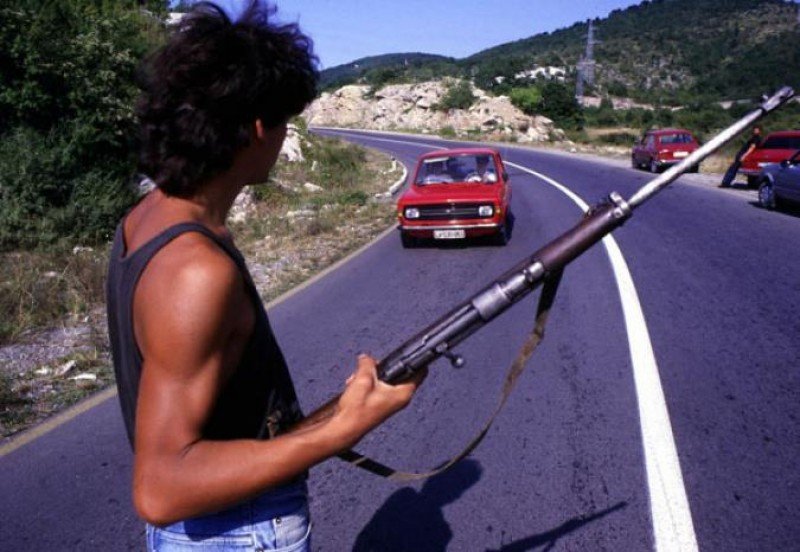On 17 August 1990, Croatian Serbs set up roadblocks around the town of Knin. It was the beginning of a revolt by some Serbs against the new government elected in Croatia’s first multi-party elections. As large logs and rocks were placed on roads to block passage through Serb-controlled areas, this event became known as the “log revolution”.
A typical sequence of insurgent unrest in areas with a majority Serbian population followed. After mass rallies marked by militant radicalism, a referendum on secession was announced and Serbs then proclaimed the establishment of the so-called “Serbian Autonomous Region of Krajina” in Knin on 1 July 1990. The reason given by insurgent Serbs for the “log revolution” was the intent of the Ministry of the Interior of the Republic of Croatia to confiscate weapons from their reserve police units who threatened rebellion in areas such as Knin, Benkovac, Obrovac and Gračac.
Although a completely logical and legitimate act by the democratically elected Croatian government, the media in Belgrade and Knin considered it an attack on the unarmed and helpless Serbian people. Their intent was to “ignite” rebellion and have the Serbs take to the streets in order to overthrow the government in Croatia much like they did in the autonomous region of Vojvodina during the “Yogurt Revolution” of 1987. The barricades were set up at the height of the tourist season and severed transportation on a number of routes between northern and southern Croatia. It was a tremendous shock for a country whose economy relied heavily on tourism.
Croatian President Franjo Tuđman ordered immediate action to be taken. Armoured personnel carriers on the highway through the Lika region were stopped by the Serbs at Titova Korenica and had to return to Slunj. Three helicopters carrying special police forces were also sent to Knin but were forced to abandon their mission after they were intercepted near Ogulin by three MIG fighter jets from the Yugoslav People’s Army.
The Serbian rebel leadership in Croatia tried to memorialize 17 August 1990 and declared it the “Day of the Uprising of the Serbian People in Croatia” in 1992. Interestingly, the Serbs in what remained of Yugoslavia endorsed this as well which was further evidence of Serbia’s involvement in the aggression against Croatia. This took place when the National Assembly of Serbia in 1992 passed the “Law on Pension and Disability Insurance” which specified that time spent in the Yugoslav Armed Forces after 17 August 1990 (the date when the rebellion began) would be formally recognized as legitimate military service with full entitlement to benefits… a tacit acknowledgement that Serbia’s undeclared war against Croatia began on that day.
Sources
Literature
Valentić, Mirko. Rat protiv Hrvatske 1991. – 1995. – Velikosrpski projekti od ideje do realizacije. Slavonski Brod i Zagreb: Hrvatski institut za povijest – Podružnica za povijest Slavonije, Srijema i Baranje; Hrvatski memorijalno-dokumentacijski centar Domovinskog rata, 2010.
TV
TV Kalendar (2015.) Croatian Radio and Television. author Tomislav Šulj, editor Vladimir Brnardić, August 17, 2015
Graduated with a Master’s Degree in History from the University of Zagreb. He has worked at the Croatian History Museum and as a researcher for the popular TV Calendar program for Croatian Radio and Television. He has authored several books and documentaries about Croatia’s Homeland War and is the creator/producer of the immensely popular “It Happened on this Day – Homeland War” Facebook page as well as the online portal Domovinskirat.hr. Borna also is the host and editor of the daily segment “Patriotic Minutes” on Croatian Catholic Radio. He created CroHis to promote the values of the Homeland War and ensure that the sacrifices of those who defended Croatia’s independence would not be forgotten.

